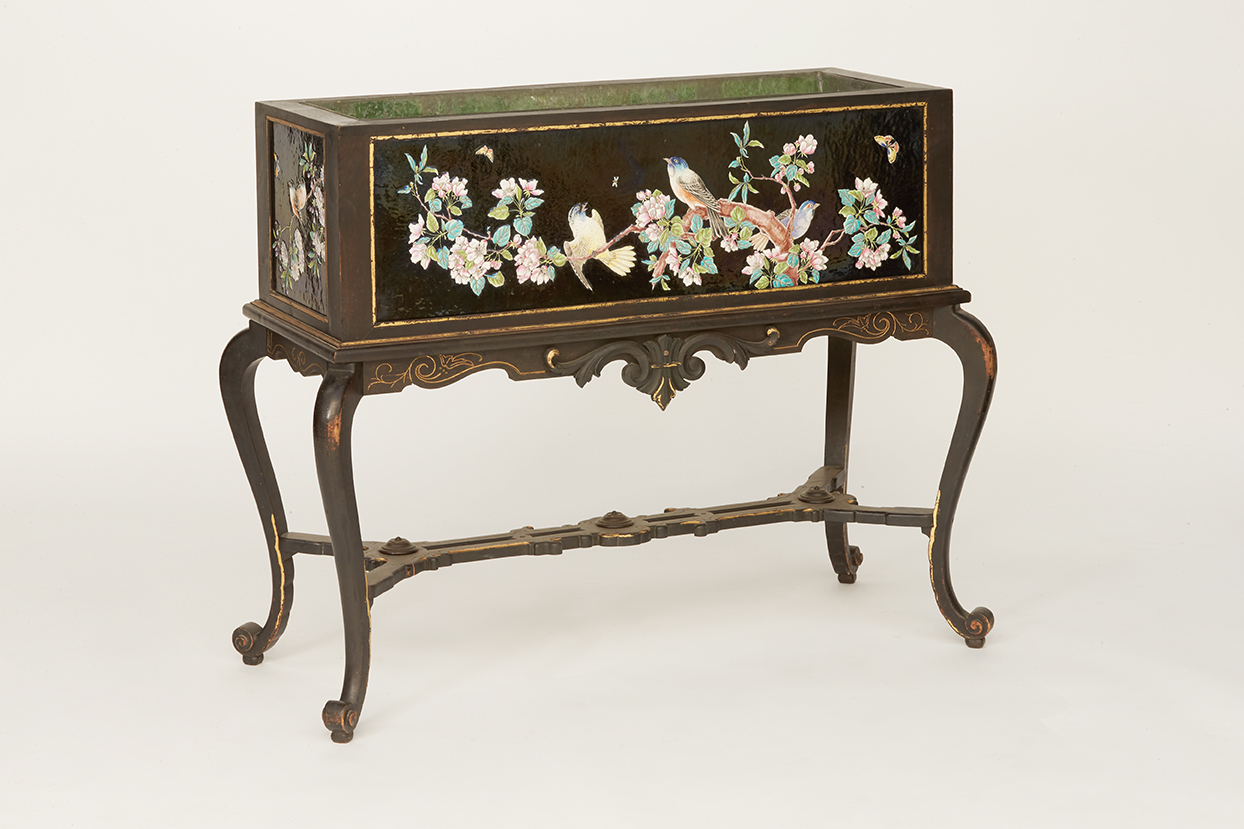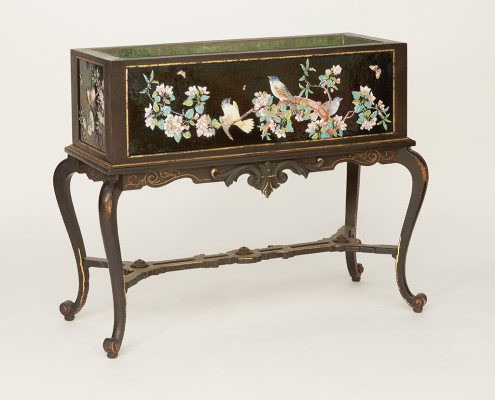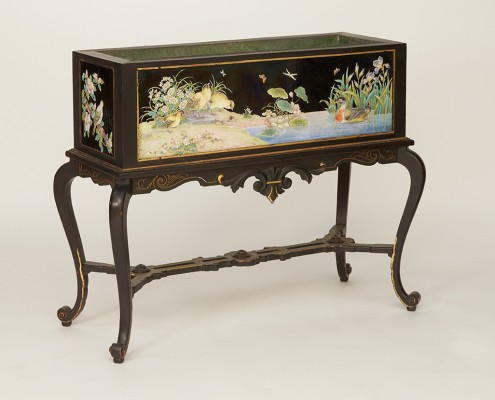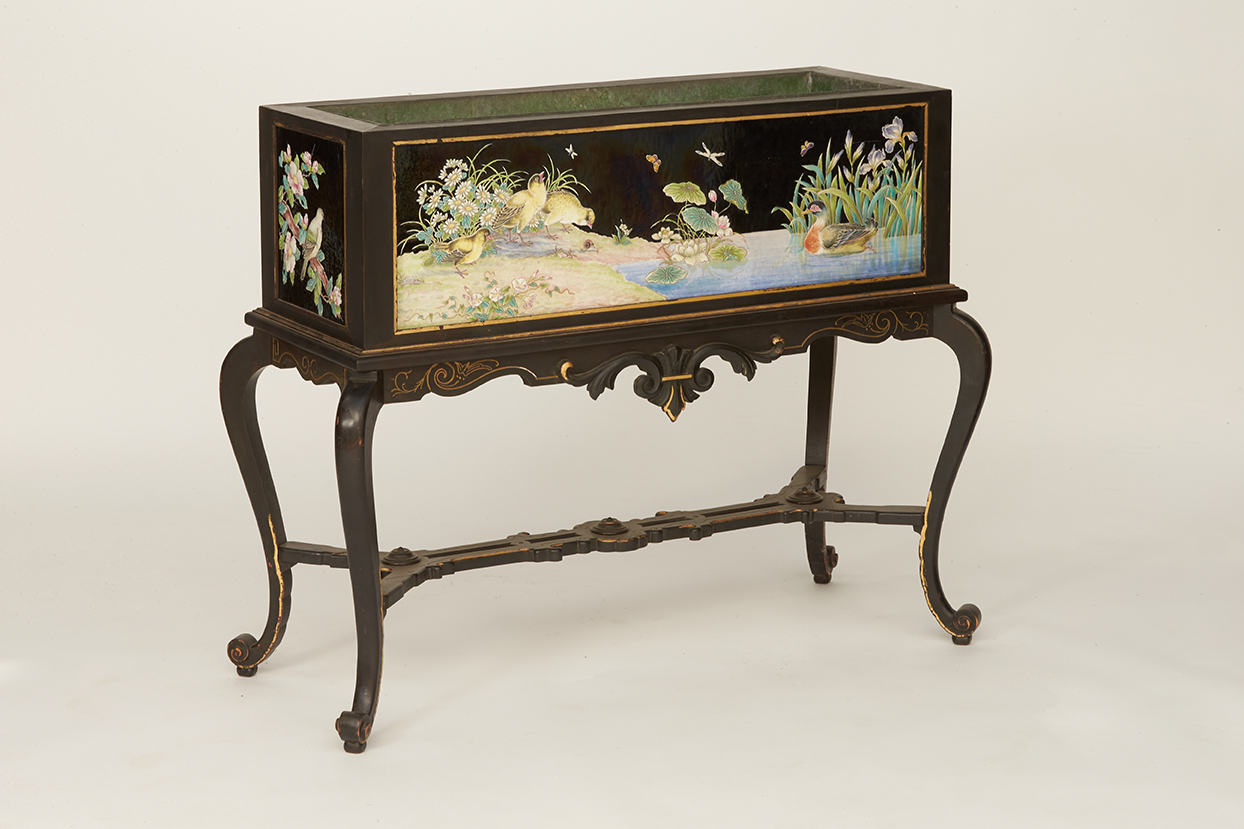Wooden planter and ceramic panels, Eugène Collinot, circa 1880
This large planter was realized by the ceramist Eugène Collinot at the end of the 19th century. Made of wood and flanked by ceramic panels with cloisonned enamels, this large planter receives a volute base. The X-shaped spacer is very stylized and richly worked. The ceramic panels are decorated in different ways. One side of the planter is decorated with a large branch of a Japanese cherry tree with pink flowers and green leaves. Birds are perched on these branches Butterflies also punctuate the scene. The other side features a scene of a pond edge. To the left of the composition, the water in the pond is dotted with reeds. A yellow and brown duck with an orange colour moves towards the ground. On the shore, three chicks seem reluctant to join the duck. Daisies are drawn, as well as butterflies. The inspiration comes from Asian aesthetic vocabulary, reflecting the attraction of artists to the Far East.
Like Theodore Deck, Eugène-Victor Collinot was considered one of the best ceramists of his time. Several of his great compositions appeared at the Paris and Vienna World Fairs. Eugène-Victor Collinot invented relief glazes surrounded by earthenware. Indeed, this technique consists in separating the various enamels by a line which one calls”ring”.
This high quality japanese inspired planter bears witness to the new influences that came from the Far East and touched ceramists from the second half of the 19th century. The Collinot & Cie factory is part of this real race to monumentality which is visible at Universal Exhibitions and which pushes the material to the limits of its possibilities.







